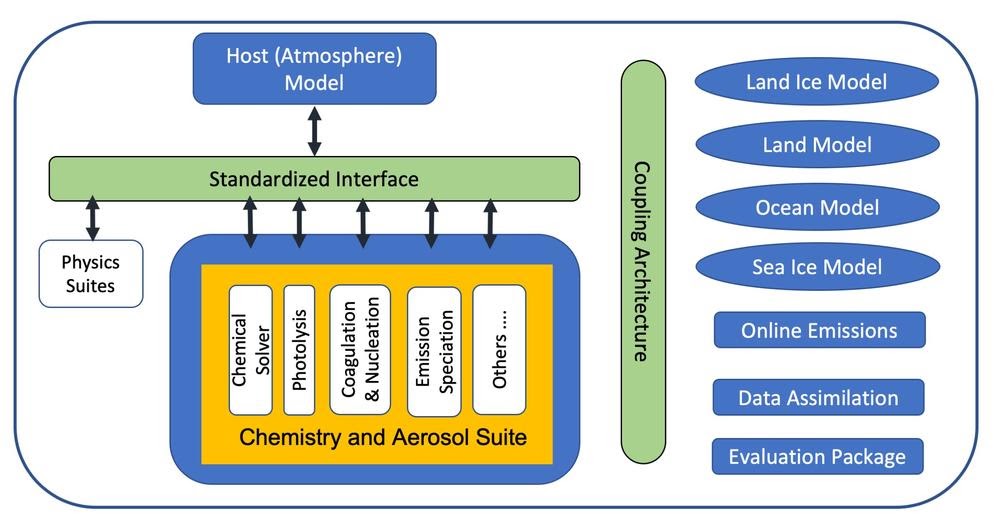Multiscale Infrastructure for Chemistry and Aerosols
The Multiscale Infrastructure for Chemistry and Aerosols (MUSICA) is currently being developed to become an NCAR-led next generation community infrastructure for studying atmospheric composition and addressing frontier science questions. Example frontier science topics include examining effects of global phenomenon or long-range transport on local air quality, effects of urban centers and wildfires on continental and global scales, and sub-seasonal to seasonal predictions of air quality. The unique aspect of MUSICA, compared to current chemistry transport models, is that it will be capable of simulating the globe to capture large-scale phenomena while still resolving chemistry and physics at local scales relevant to impact assessment and decision-making.
MUSICA is being developed with and for the atmospheric sciences community. After hosting a MUSICA Kickoff Meeting in May 2019 and creating seven working groups and selecting working group leaders from throughout the community, these MUSICA leaders wrote a MUSICA vision paper that is being published in the Bulletin of the American Meteorological Society. Pfister et al. (2020) describe the goals, challenges, and scientific gains of modeling chemistry-related processes in a unified and modular approach (Figure). The MUSICA leaders have begun writing an implementation plan based on the MUSICA vision and have populated their working groups with members of the community to further develop the implementation plans.
ACOM scientists have made significant progress with the MUSICA-V0 model that is a regionally refined version of the CAM-chem global chemistry climate model using a spectral element unstructured grid. The configuration with regional refinement over the conterminous U.S. has been released with CESM2.2 as a compset along with the emissions tools to provide emissions on unstructured grid meshes. As part of this release, a wiki page has been developed providing instructions on getting started with MUSICA-V0. Tutorial sessions are planned for the coming year.
The initial application for MUSICA-V0 has been to evaluate with field campaign and monitoring measurements during 2013 when several field campaigns occurred. Now MUSICA-V0 is being applied to study biomass burning plumes on air quality over the U.S. during 2018 and 2019 when the NSF WE-CAN and NASA/NOAA FIREX-AQ field campaigns were being conducted. MUSICA-V0 is also being configured to have regional refinement over eastern Asia to contribute modeling analysis to the NSF/NASA ACCLIP field campaign.

Figure 1. Schematic: MUSICA defines a framework to integrate chemistry into any atmospheric host model. Its design will enable its components to be connected to any 3-dimensional (3-D) global or regional atmosphere model, or to any 1-D single column or 0-D box model. It will also have the capability to be driven by atmospheric re-analyses. It includes coupling to emissions, evaluation and data assimilation tools and enables linking to other Earth System components, all through well-defined standardized interfaces. All physics and chemistry processes operate on individual columns, cross-column processes have to be handled by the host model.
References
Pfister, G. G., S. Eastham, M. Barth, L. Emmons, D. Jacob, D. Marsh, A. Arellano, B. Aumont, K. Barsanti, A. Conley, N. Davis, J. Fast, A. Fiore, B. Gaubert, St. Goldhaber, C. Granier, G. Grell, M. Guevara, D. Henze, A. Hodzic, X. Liu, J. Orlando, J. Plane, L. Polvani, K. Rosenlof, A. Steiner, and G. Brasseur, A MUlti-Scale Infrastructure for Chemistry and Aerosols – MUSICA (2020) accepted for publication by Bull. Amer. Meteor. Soc., https://doi.org/10.1175/BAMS-D-19-0331.1.